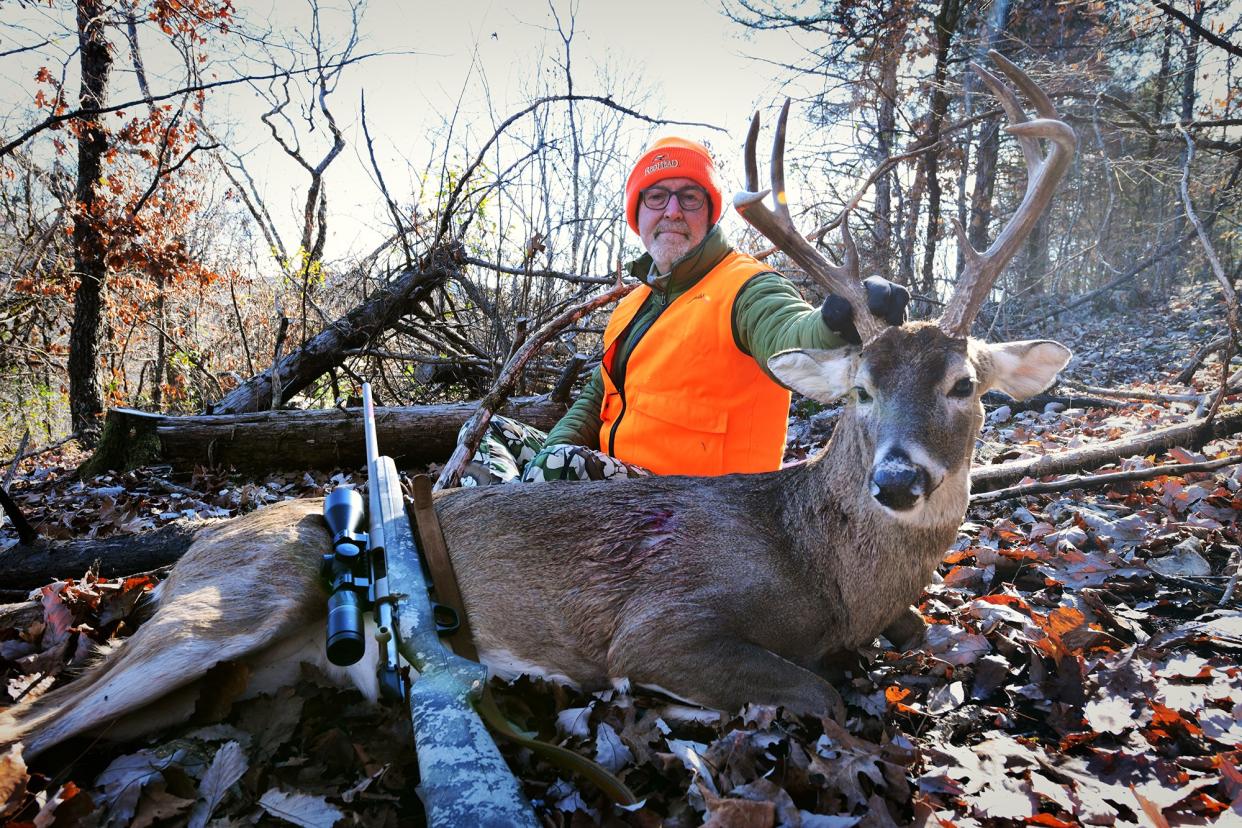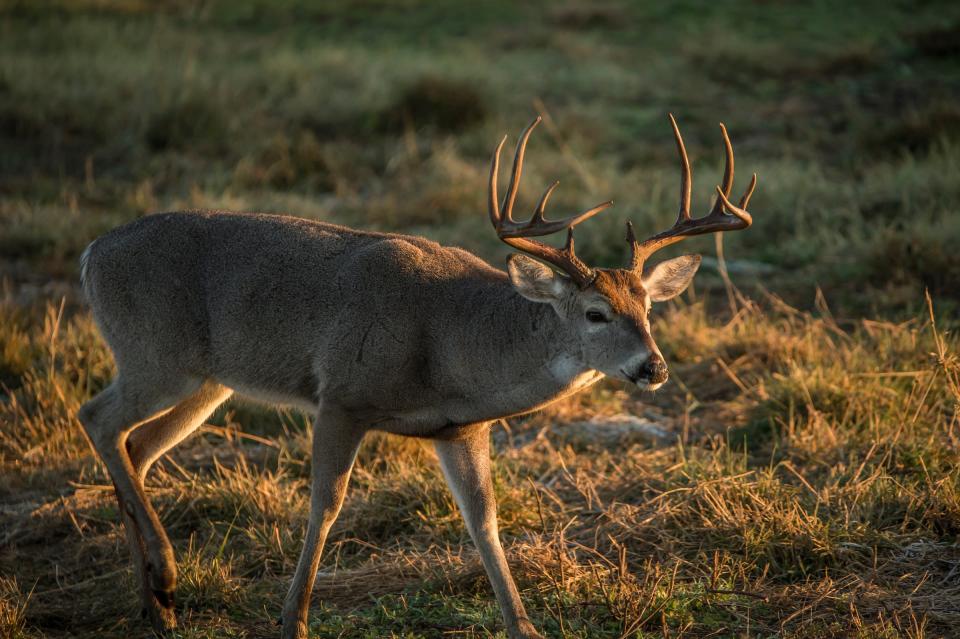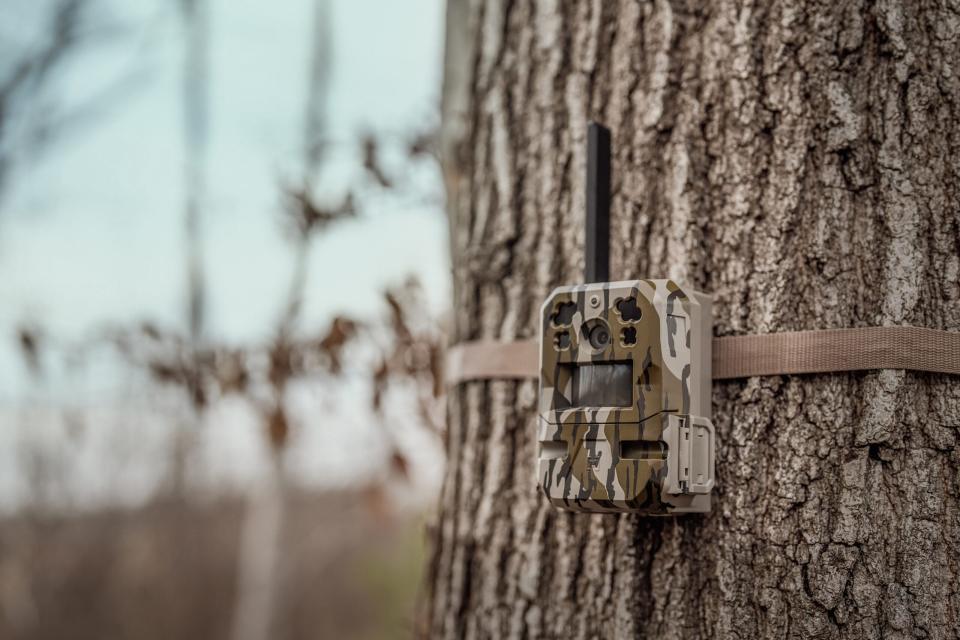Dr. Grant Woods on What Hunters Should Know About the Rut, Weather, and Deer Activity

During the whitetail pre-rut and rut, hunters should worry less about the type of weather that will “get deer moving” and focus more on weather conditions that will help us hunt more effectively. That’s one of my takeaways from interviewing Dr. Grant Woods, a renowned wildlife researcher and diehard deer hunter. Woods and his crew publish excellent informational hunting content on his website, Growing Deer TV.
I interviewed him on Halloween just as a spectacular cold front was sinking into the heart of deer country. But if you didn’t kill your target buck during that front, don’t worry. The hunting is still getting better, Woods says. You can listen to my full interview with Woods in the podcast episode below. And read on to learn Woods’ other tips for understanding the rut, weather, and deer activity.
https://embed.podcasts.apple.com/us/podcast/busting-deer-movement-weather-myths-with-dr-grant-woods/id1560573207?i=1000633489479&itsct=podcast_box_player&itscg=30200&ls=1&theme=auto
Cold Fronts Don’t Speed Up the Rut
Recent research has found that fronts, even big cold fronts like we just experienced, don't increase whitetail rutting activity, Woods says.
“The research says that weather is not much of a [factor in regards to deer rutting activity],” he says. “And that’s caused a bit of an issue in the last few years between hunters and researchers in a lot of online chatter.”
This discrepancy stems from the fact that hunters tend to see more deer when cold fronts hit. So, what gives? Woods’ explanation is essentially that both researchers and hunters are right. Cold temps don’t speed up breeding activity, but they do mean that hunters are more likely to see deer from their stands.
“I’m going to tell you, during our cold front, we went from high 70s to 30 and under in 24 hours. And on my trail cameras, when that cold front hit, I got a big spike… So what I’m saying is there’s some miscommunication going on,” Woods says. “Putting my scientist hat on now, typically I can’t publish something unless … 95 times out of 100 it’s going to happen. Well there’s a lot of conflicting things [concerning weather and deer activity]. When did the barometer rise? How much of a temperature was it? What phase of the rut was it? There’s a lot of noise. And when there’s a lot of noise a good biologist that’s doing really good work is going to say ‘I can’t say X because there’s too much noise.’ They’re going to be a little more conservative if they’re doing honest science.”
So what’s the takeaway for the hunter? It’s important to know that in the pre-rut deer usually don’t go running far outside their home range, even on a big cold front. However, they might walk around more within their home range.
Also, it's important to understand what the pre-rut really is. Woods defines the pre-rut as the time period during which less than 25 percent of does are receptive. Bucks are seeking or moving more. Every day, a few more does become receptive and that brings a frenzy to the bucks. All of this happens regardless of weather.
Rut Activity Will Continue Even When the Weather Warms
Yep, deer will keep on rutting even when the weather warms.
“The rut is a bell shaped curve and we’re definitively climbing up that curve [right now]. We’re increasing in intensity. So even if it’s 80 degrees, but the prom only happens once where you hunt, it’s still going to happen [during a warm front],” Woods says. “Now hunters sometimes debate that but if you look [at spring fawning season], fawns are born at the same time in the same place every year. There’s going to be some early fawns, a big cluster of fawns, and then some late fawns. [That's because] especially up North, if they’re born too early, they’re going to fall into a snowbank and they’re not going to make it. And if they’re born too late they’re not going to gain enough weight before the next winter and they’re not going to make it. So the system is pretty refined over a long time. The rut is going to happen at the same time [locally, every year].”
Temperature Changes Don’t Need to Be Dramatic for Increased Deer Activity
Most deer hunters love to focus on the big fronts, but small changes in temperature can make for productive hunting, too. Woods uses a rough temperature change rule when deciding when to hunt vs. when to work.
“When it’s been warmer than normal, I get excited when there’s a 10 percent temperature decrease.”
So if it’s been 80 degrees and the forecast is calling for a drop down to 72 degrees, Woods will plan on hunting. During the late season, when deer are moving during warmer periods, Woods will hunt during a 10 percent increase in temperature. That means a small bump, like from 30 to 33 degrees.
When the rut is increasing in intensity, like it is right now, typical and stable weather makes for great hunting days, too, Woods says.
“Normal days are great days,” he says.
If the conditions are hot and not favorable, it’s probably not the time to skip work for an all-day sit. But Woods suggests making a short evening hunt and sliding in closer to bedding areas (assuming you can do so without bumping deer). This is because deer are likely to move only a few minutes before the end of legal shooting light during hot days. So there’s a chance you could catch a buck just leaving his bed at the end of the day.
Bucks Move Less in the Rain, Does Move More
Don’t be fooled by that one trail camera photo of a buck you have moving during a rainstorm. Bucks actually tend to move less during a steady rain.
“Researchers, again using GPS collared deer, have seen that bucks tend to move less when it’s raining,” Woods says. He thinks this could be because they have a harder time detecting predators in the rain, with blowing leaves and other disturbances in the woods.
Strangely, however, does tend to move a little bit more in the rain, Woods says. No one is quite sure why.
Focus on Predator Weather
Instead of worrying about how weather impacts deer, hunters should consider how weather affects our potential success as predators. Woods mentions barometric pressure as a good example. During high pressure and low humidity, hunters tend to see more deer. But that’s not necessarily because deer are moving more on high-pressure days (data say they don’t). Instead, it’s likely because high pressure days favor the hunter so we're not getting busted by deer.
“On high-pressure days, our scent is actually rising. So we’re able to get closer to deer without them detecting our scent,” Wood says. “We’re not talking [enough] about a hunter’s ability to hunt. We’re totally focused on the deer and what’s making them move. We need to accept that they’re feeding and drinking and avoiding predators every day of their lives.”
“I don’t have any data on this, but understanding the science and being a diehard hunter, I believe the biggest problem is that we often don’t include the human element and we are alerting way more deer than we think we are.”
Pay Attention to Wind Speed and Consistency

Wind is the biggest factor in our ability to hunt whitetails effectively—we all know this. But Woods says to analyze not just wind direction, but also wind speed and consistency. Hunters have the advantage during a strong (but not gusting) wind that is consistent in direction and speed.
This is one of the reasons why hunters tend to have success during cold fronts, Woods says. He suggests using NOAA’s Wind Roses page, which shows predominant wind direction and wind strength. This will help you get a better idea of how to set stands in your area.
Considering that deer live by their noses, Woods has a logical theory about why deer are most active at dawn and dusk. The temperature changes during morning (warming) and evening (cooling), often cause the wind to shift and swirl. A swirling wind helps deer detect predators from all directions, which makes them feel safer while moving and feeding.
“At night and full daytime deer only get nasal protection, if you will, from about 180 degrees —just throwing a number out,” Woods says. “But at sunrise and sunset, because the Earth is warming the Earth is cooling, thermals are shifting, they’re getting protection from a much greater area.”
One tactic Woods employs is executing very short hunts in the evening. The less time you’re out there, the less time there is for your scent to disperse and for that big buck to potentially bust you. —A.R.
Read Next: Aaron Warbritton on How to Hunt the Rut on Public Land
A Better Way of Tracking Deer Activity (Sponsored)

Moultrie Mobile is the most comprehensive cellular trail camera system on the market for capturing and tracking deer activity and planning your hunt. The new EDGE Pro cellular camera is packed with features that make it reliable and easy to set up. However, what’s most impressive about this very capable trail camera is the app that comes with it. First, Moultrie Mobile’s system uses A.I. to tag buck images so that you can select the most useful data—and not get bombarded with hundreds of images of squirrels and turkeys. The app also provides deer activity charting which tells you which camera locations have the highest traffic based on the time of day, temperature, and moon phase.
The Moultrie Mobile app just released an industry-first buck-movement prediction tool called Game Plan. Unlike other predictive models that focus on the moon phase, Game Plan uses recent, local trail camera data, along with upcoming weather info to help calculate the best time to be in the stand. The app also rolled out a new and improved mapping feature that allows you to view a variety of layers—including property lines and topo lines—and set more than 70 pin types on your hunting property map.
The exciting part about this technology is that if you run a handful of Moultrie Mobile cell cams on your property, you’ll quickly learn deer activity patterns. You’ll see when and where deer move in relation to different weather factors. If you run cameras consistently year after year, you’ll gain long-term historical data (which the app stores) that will help you make predictions about deer movement. But here’s the key: The data will be specific to the place you hunt, which makes it all the more valuable. —Outdoor Life Brand Team

